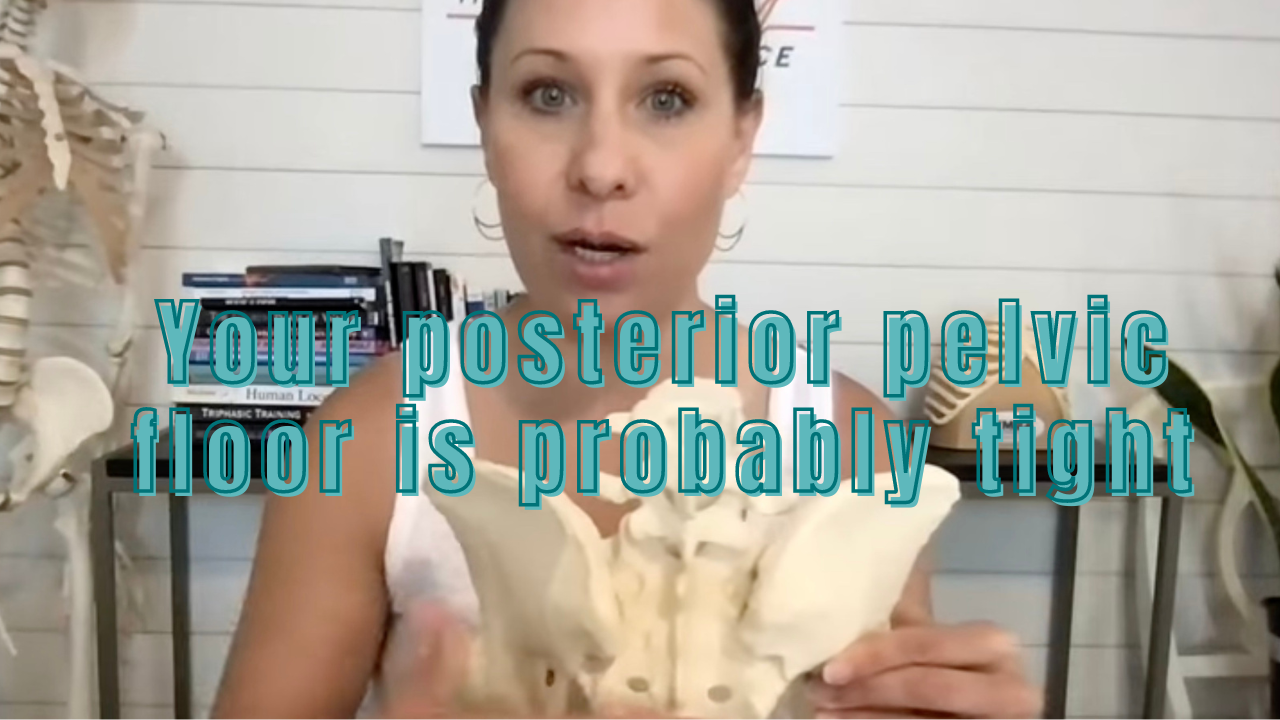Why everyone can benefit from reducing tension in their posterior pelvic floor.
Jul 01, 2023
The pelvis is not just a solid block of bones that don't move. In fact, the ability for the pelvic bones to move relative to the sacrum (tail bone) is really important. Even though there is not a large amount of movement, the wiggle between them is what allows us to walk comfortably, strength train without niggles, facilitate optimal breathing from the bottom up, manage pressure between the thorax and pelvis, and trust the muscles of the hips to provide support.
Generally I see a more problems with posterior pelvic floor tension than anterior pelvic floor tension. This tension limits the motion of the iliums into internal rotation and sacrum into nutation. When we are able to allow the posterior pelvic floor to relax and lengthen, we allow the pelvic bones / iliums to move into internal rotation, the sacrum can nutate (tip forward) better and this allows for a better hinge, better position of the spine and hips at the mid range of a squat, and an ease in walking or running. This also allows us to be able to access a better contraction in the front of our pelvic floor which is helpful for managing pressure pushing down into the pelvis and optimizing the breath.
This is not just a problem for postpartum women but for anyone! Because of the alterations we experience during and after pregnancy this tends to be thought of as only an issue for women but many men and people who have never had children experience the same issues and movement limitations.
Here is a video of me breaking down the pelvis position so you can understand a bit more about why this area can be so hard to let go as well as common postural adaptations that might be more prone to restriction in this area.
Posterior Pelvic Floor Tightness Explained
And here is a video of exercises that can help release tension in that area so you can move and lift with less irritation and more ease.
Posterior Pelvic Floor Release Exercises
Even if you think you do not have problems with tightness in this area, I can guarantee you that these exercises will improve your relationship with your body and optimize your strength training. Give them a try and let me know what you think!
Stay tuned for a post on how the feet can impact the pelvic floor!

